Sanyo PLC-SP20N User Manual
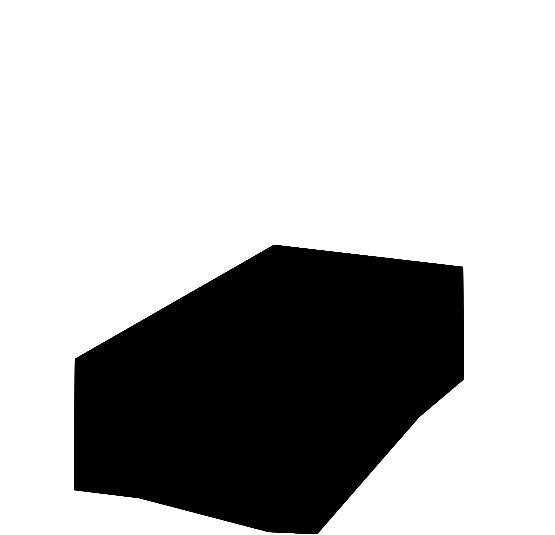
Multimedia Projector
MODEL PLC-SP20N
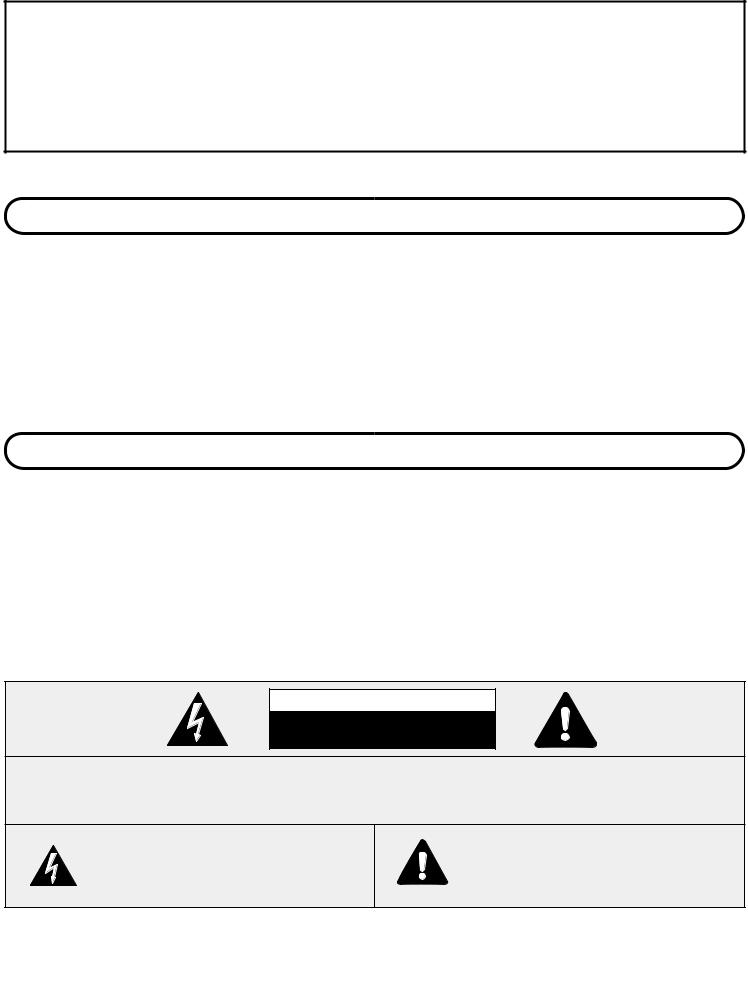
INFORMATION TO THE USER
NOTE : This equipment has been tested and found to comply with the limits for a Class A digital device, pursuant to Part 15 of the FCC Rules. These limits are designed to provide reasonable protection against harmful interference when the equipment is operated in a commercial environment. This equipment generates, uses, and can radiate radio frequency energy and, if not installed and used in accordance with the instruction manual, may cause harmful interference to radio communications. Operation of this equipment in a residential area is likely to cause harmful interference in which case the user will be required to correct the interference at his own expense.
TO THE OWNER
As the owner of a new Multi-media Projector, you are probably eager to try out your new projector. Before you do, we suggest that you spend a little time reading this manual to familiarize yourself with the operating procedures, so that you will receive maximum satisfaction from the many features included in your new projector.
This owner’s manual will acquaint you with your projector’s features. Reading it will help us too. Through the years, we have found that many service requests were not caused by problems with our projectors. They were caused by problems that could have been prevented, if the owner had followed the instructions in the manual.
You can often correct operating problems yourself. If your projector fails to work properly, see “TROUBLESHOOTING” section on pages 49 ~ 50 and try the solutions marked for each problem.
SAFETY PRECAUTIONS
WARNING:
TO REDUCE THE RISK OF FIRE OR ELECTRIC SHOCK, DO NOT EXPOSE THIS APPLIANCE TO RAIN OR MOISTURE.
This Projector has a grounding-type AC line plug. This is a safety feature to be sure that the plug will fit into the power outlet. Do not try to defeat this safety feature.
Intense light source. Do not stare directly into the projection lens as possible eye damage could result. Be especially careful that children do not stare directly into the beam.
If the Projector will not be used for an extended time, unplug the new Projector from the power outlet.
READ AND KEEP THIS OWNER’S MANUAL FOR LATER USE.
CAUTION
RISK OF ELECTRIC SHOCK
DO NOT OPEN
CAUTION : TO REDUCE THE RISK OF ELECTRIC SHOCK, DO NOT REMOVE COVER (OR BACK). NO USER-SERVICEABLE PARTS INSIDE EXCEPT LAMP REPLACEMENT. REFER SERVICING TO QUALIFIED SERVICE PERSONNEL.
THIS SYMBOL INDICATES THAT DANGEROUS VOLTAGE CONSTITUTING A RISK OF ELECTRIC SHOCK IS PRESENT WITHIN THIS UNIT.
THIS SYMBOL INDICATES THAT THERE ARE IMPORTANT OPERATING AND MAINTENANCE INSTRUCTIONS IN THE OWNER’S MANUAL WITH THIS UNIT.
– 2 –
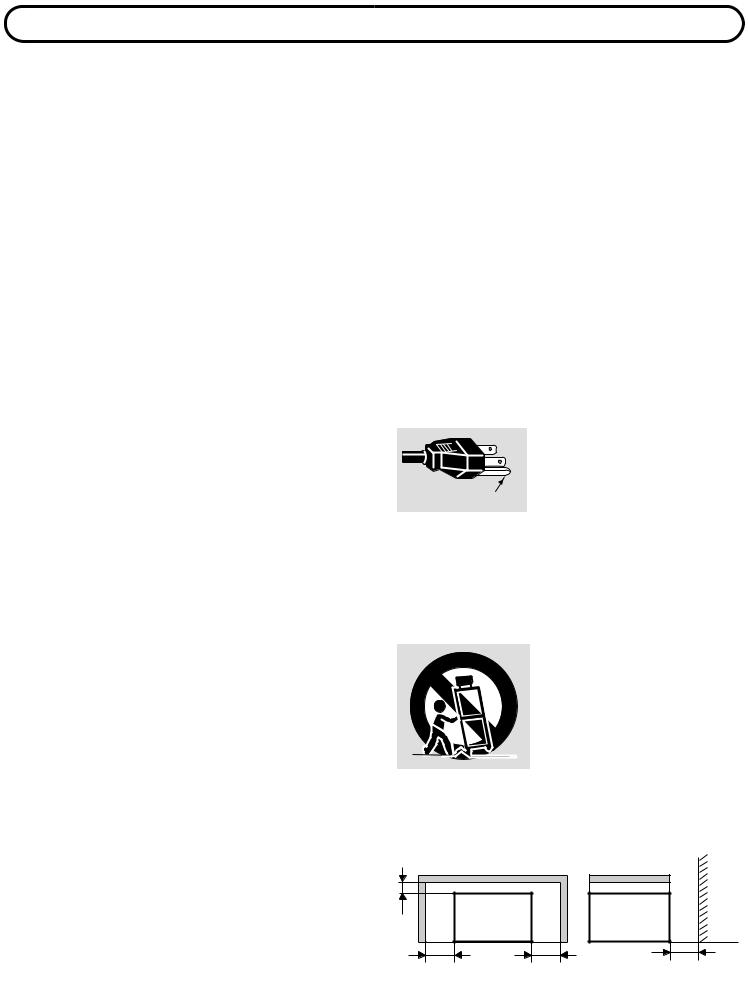
IMPORTANT SAFETY INSTRUCTIONS
All the safety and operating instructions should be read before the product is operated.
Read all of the instructions given here and retain them for later use. Unplug this projector from AC power supply before cleaning. Do not use liquid or aerosol cleaners. Use a damp cloth for cleaning.
Do not use attachments not recommended by the manufacturer as they may cause hazards.
Do not place this projector on an unstable cart, stand, or table. The projector may fall, causing serious injury to a child or adult, and serious damage to the projector. Use only with a cart or stand recommended by the manufacturer, or sold with the projector. Wall or shelf mounting should follow the manufacturer’s instructions, and should use a mounting kit approved by the manufacturer.
Do not expose this unit to rain or use near water... for
example, in a wet basement, near a swimming pool, etc...
Slots and openings in the back and bottom of the cabinet are provided for ventilation, to insure reliable operation of the equipment and to protect it from overheating.
The openings should never be covered with cloth or other material, and the bottom opening should not be blocked by placing the projector on a bed, sofa, rug, or other similar surface. This projector should never be placed near or over a radiator or heat register.
This projector should not be placed in a built-in installation such as a bookcase unless proper ventilation is provided.
This projector should be operated only from the type of power source indicated on the marking label. If you are not sure of the type of power supplied, consult your authorized dealer or local power company.
Do not overload wall outlets and extension cords as this can result in fire or electric shock. Do not allow anything to rest on the power cord. Do not locate this projector where the cord may be damaged by persons walking on it.
Never push objects of any kind into this projector through cabinet slots as they may touch dangerous voltage points or short out parts that could result in a fire or electric shock. Never spill liquid of any kind on the projector.
Do not attempt to service this projector yourself as opening or removing covers may expose you to dangerous voltage or other hazards. Refer all servicing to qualified service personnel.
Unplug this projector from wall outlet and refer servicing to qualified service personnel under the following conditions:
a.When the power cord or plug is damaged or frayed.
b.If liquid has been spilled into the projector.
c.If the projector has been exposed to rain or water.
d.If the projector does not operate normally by following the operating instructions. Adjust only those controls that are covered by the operating instructions as improper adjustment of other controls may result in damage and will often require extensive work by a qualified technician to restore the projector to normal operation.
e.If the projector has been dropped or the cabinet has been damaged.
f.When the projector exhibits a distinct change in performance-this indicates a need for service.
When replacement parts are required, be sure the service technician has used replacement parts specified by the manufacturer that have the same characteristics as the original part. Unauthorized substitutions may result in fire, electric shock, or injury to persons.
Upon completion of any service or repairs to this projector, ask the service technician to perform routine safety checks to determine that the projector is in safe operating condition.
This projector is equipped with a grounding type AC line plug. Should you be unable to insert the plug into the outlet, contact your electrician.
GROUND Do not defeat the safety purpose of this grounding type plug.
Follow all warnings and instructions marked on the projectors.
For added protection to the projector during a lightning storm, or when it is left unattended and unused for long periods of time, unplug it from the wall outlet. This will prevent damage due to lightning and powerline surges.
An appliance and cart combination should be moved with care. Quick stops, excessive force, and uneven surfaces may cause the appliance and cart combination to overturn.
If the projector is to be built into a compartment or similarly enclosed, the minimum distances must be maintained.
Do not cover the ventilation slot on the projector.
Heat build-up can reduce the service life of your projector, and can also be dangerous.
20cm PROJECTOR |
PROJECTOR |
WALL |
(FRONT) |
(SIDE) |
|
50cm |
50cm |
50cm |
– 3 –

TABLE OF CONTENTS
|
PAGE |
INTRODUCTION |
5 |
COMPATIBILITY |
5 |
IMAGE RESOLUTION |
5 |
PORTABILITY |
5 |
UNPACKING THE PROJECTOR |
5 |
TRADEMARKS |
5 |
POWER REQUIREMENT |
6 |
DESCRIPTION |
7 |
SETTING-UP THE PROJECTOR |
8-9 |
POSITIONING |
8 |
ROOM LIGHT |
8 |
VENTILATION |
8 |
ADJUSTABLE FEET |
9 |
MOVING THE PROJECTOR |
9 |
CONNECTING THE PROJECTOR |
10-17 |
CONNECTING THE COMPUTER |
10-14 |
Connecting an IBM-compatible desktop computer |
11 |
Connecting a Macintosh desktop computer |
12 |
Connecting an IBM-compatible laptop computer |
13 |
Connecting a Macintosh PowerBook computer |
14 |
CONNECTING THE VIDEO EQUIPMENT |
15-16 |
CONNECTING AN EXTERNAL SPEAKER |
17 |
OPERATION OF CONTROLS |
18-20 |
TOP OF THE PROJECTOR |
18-19 |
REAR OF THE PROJECTOR |
20 |
OPERATION OF REMOTE CONTROL |
21-23 |
REMOTE CONTROL BATTERY INSTALLATION |
23 |
USING THE REMOTE CONTROL UNIT |
23 |
CONTROL THE PROJECTOR |
24-26 |
DIRECT OPERATION |
24 |
MENU OPERATION |
25-26 |
USING THE PROJECTOR |
27-46 |
TO TURN ON THE PROJECTOR |
27 |
TO TURN OFF THE PROJECTOR |
27 |
DIRECT OPERATION |
27 |
MODE SELECT |
27 |
SOUND VOLUME ADJUSTMENT |
28 |
|
PAGE |
SOUND MUTE FUNCTION |
28 |
ZOOM ADJUSTMENT |
28 |
FOCUS ADJUSTMENT |
28 |
DIGITAL ZOOM ADJUSTMENT |
28 |
NORMAL PICTURE FUNCTION |
28 |
NO SHOW FUNCTION |
28 |
P-TIMER FUNCTION |
28 |
FREEZE PICTURE FUNCTION |
28 |
AUTO IMAGE FUNCTION |
28 |
MENU OPERATION |
29-46 |
MODE SELECT |
29 |
SOUND ADJUSTMENT |
30 |
LANGUAGE ADJUSTMENT |
30 |
COLOR SYSTEM SELECT |
31 |
PICTURE IMAGE ADJUSTMENT |
32 |
PICTURE SCREEN ADJUSTMENT |
33 |
COMPUTER SYSTEM SELECT |
34 |
COMPATIBLE COMPUTER SPECIFICATION |
35 |
AUTO IMAGE FUNCTION |
36 |
PICTURE IMAGE ADJUSTMENT |
37 |
PICTURE POSITION ADJUSTMENT |
38 |
PC ADJUSTMENT |
39-42 |
PICTURE SCREEN ADJUSTMENT |
43 |
OTHER FUNCTION SETTING |
44-46 |
BLUE BACK |
44-45 |
DISPLAY |
44-45 |
CEILING |
44-45 |
REAR |
44-45 |
SPLIT WIPE |
44-45 |
LAMP AGE |
46 |
AIR FILTER CARE AND CLEANING |
47 |
TEMPERATURE WARNING INDICATOR |
47 |
LAMP REPLACEMENT |
48 |
CLEANING THE LENS |
49 |
TROUBLESHOOTING |
49-50 |
TECHNICAL SPECIFICATIONS |
51 |
– 4 –

INTRODUCTION
The projector is a multimedia projector designed for portability, durability, and ease of use. The projector utilizes built-in multimedia features, a palette of 16.77 million colors, and active matrix liquid crystal display (LCD) technology.
COMPATIBILITY
The projector is compatible with many different types of personal computers and video devices, including;
¡IBM-compatible computers, including laptops, up to 1024 x 768 resolution. ¡Apple Macintosh and PowerBook computers up to 1024 x 768 resolution.
¡Various VCRs, video disc players, video cameras, DVD players, satellite TV tuners or other AV equipment using any of the worldwide video standards, including NTSC, NTSC4.43, PAL, SECAM and PAL-M.
IMAGE RESOLUTION
The resolution of the projector’s projected image is 800 x 600. The projector displays computer images just as they appear on your computer’s monitor. Screen resolutions between 800 x 600 and 1024 x 768 are compressed to 800 x 600. The projector cannot display screen resolutions above 1024 x 768. If your computer’s screen resolution is higher than 1024 x 768, reset it to a lower resolution before you connect the projector.
PORTABILITY
The projector is extremely compact in size and weight. Having a sophisticated shape like an attach‹G case with a retractable carrying handle, the projector will help you make powerful presentations wherever you go.
UNPACKING THE PROJECTOR
The projector comes with the parts listed below. Check to make sure all are included. If any parts are missing, contact an authorized dealer or service station.
¡Owner’s Manual.
¡AC Power Cord.
¡Remote Control Transmitter Unit and batteries. ¡Lens Cover.
¡Protective Dust Cover. ¡VGA Cable.
¡Mouse Cable for PS/2 port.
TRADEMARKS
¡Apple, Macintosh, and PowerBook are trademarks or registered trademarks of Apple Computer, Inc. ¡IBM and PS/2 are trademarks or registered trademarks of International Business Machines, Inc.
– 5 –
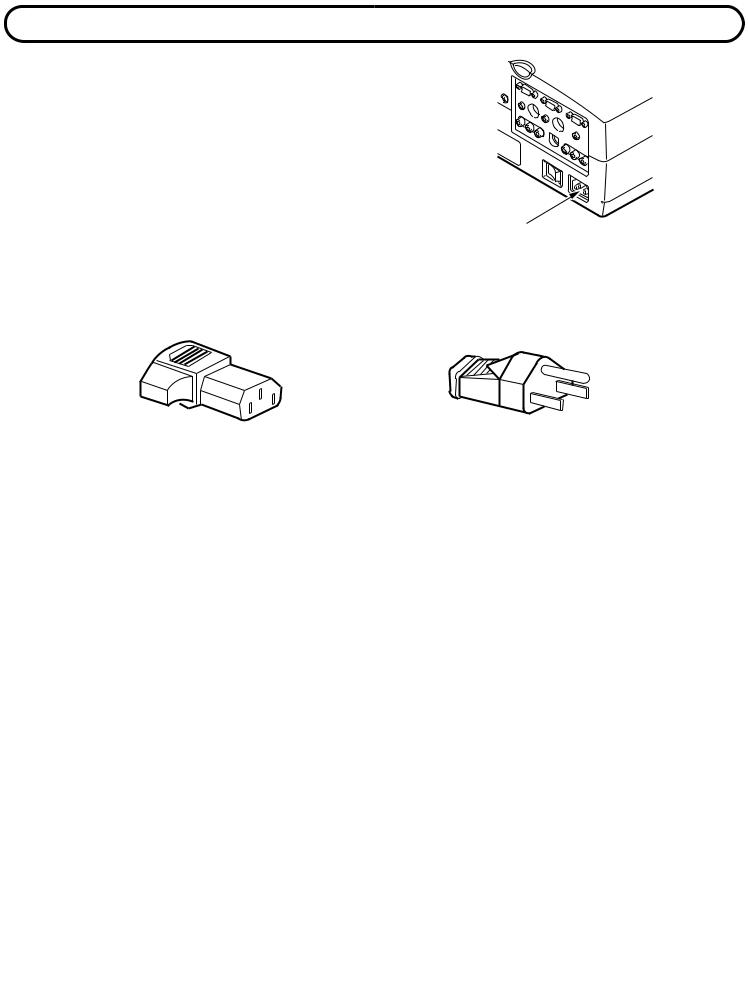
POWER REQUIREMENTS
Your projector uses nominal input voltages of 100-120 VAC. The projector automatically selects the correct input voltage. The projector is designed to work with single-phase power systems having a grounded neutral conductor. To reduce the risk of electrical shock, do not plug into any other type of power system.
Consult your authorized dealer or service station if you are not sure what type of power is supplied to your building.
Connect the AC power supply cord (supplied) to the projector.
|
Projector side (Female) |
|
AC outlet side (Male) |
|
|
|
|
|
|
|
|
|
|
|
|
|
|
– 6 –
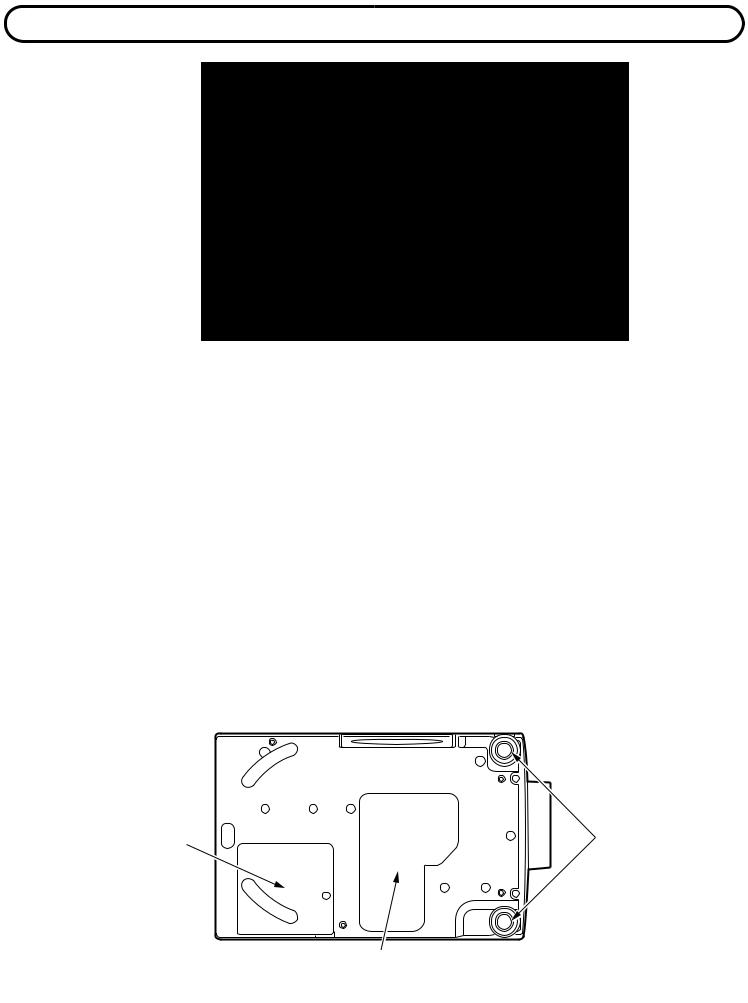
DESCRIPTION
– 7 –
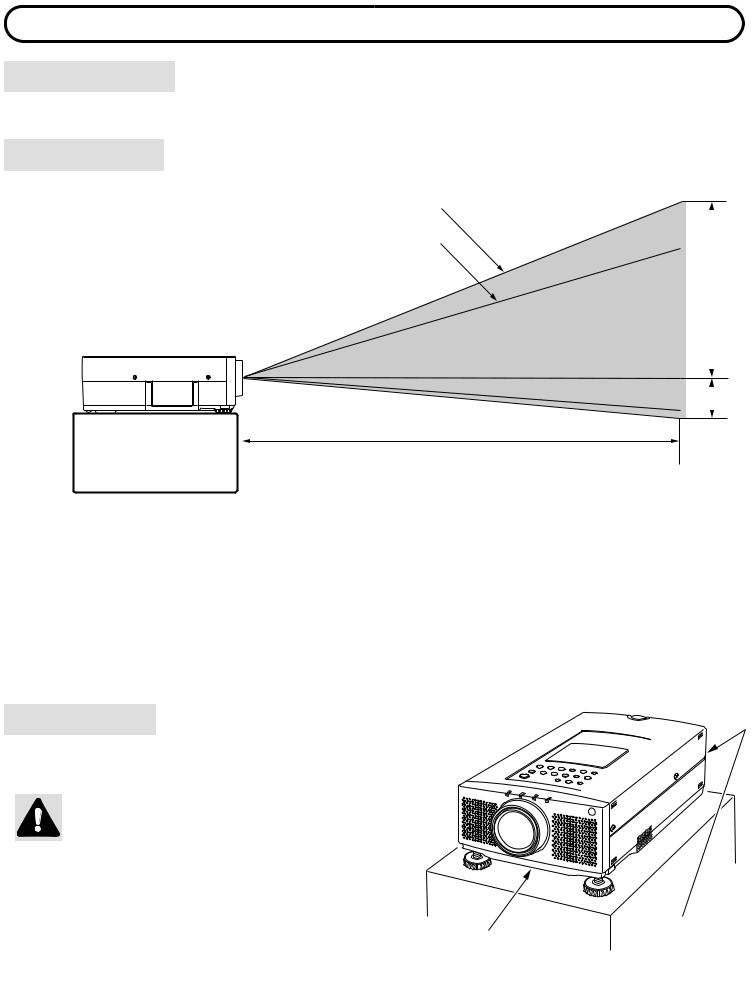
SETTING-UP THE PROJECTOR
POSITIONING: |
¡This projector is basically designed to project on a flat projection surface. |
|
¡This projector can be focused from 4.6’ (1.4 m) ~ 35.4’ (10.8 m). |
||
|
||
|
¡Use the illustration below as an example when positioning the projector to the screen. |
ROOM LIGHT
Ideally the projector should be placed in a room with limited light. Picture quality will be directly affected by lighting conditions.
|
|
|
|
Maximum Zoom |
|
|
|
|
|
300" |
|
|
||||||
|
|
|
|
250" |
|
|
|
|
||||||||||
|
|
|
|
|
|
|
|
|||||||||||
|
|
|
|
|
|
|
|
|||||||||||
|
|
|
|
|
|
|
|
|
|
|
|
|
|
|||||
|
|
|
|
Minimum Zoom |
200" |
|
|
|
|
|
|
|||||||
|
|
|
|
|
|
|
|
|
|
|||||||||
|
|
|
|
|
|
|
|
|
|
|
|
|
|
|
|
|||
|
|
|
|
|
150" |
|
|
192" |
|
|
231" |
|
|
H1 |
||||
|
|
|
|
|
|
|
|
|
||||||||||
|
|
|
|
|
|
|
|
|
|
|
|
|||||||
60" |
100" |
|
|
154" |
|
|
|
|
|
|
||||||||
|
|
|
|
|
|
|
|
|
|
|||||||||
|
|
115" |
|
|
|
|
|
|
|
|
|
|
|
|||||
|
|
|
|
|
|
|
|
|
|
|
|
|
||||||
40" |
|
|
|
|
|
|
|
|
|
|
|
|
|
|
|
|||
|
46" |
|
|
77" |
|
|
|
|
|
|
|
|
|
|
|
|||
|
|
|
|
|
|
|
|
|
|
|
|
|
|
|||||
|
|
|
|
|
|
|
|
|
|
|
|
|
|
|
|
|
||
|
|
30" |
|
|
|
|
|
|
|
|
|
|
|
|
|
|
H2 |
|
|
|
|
|
|
|
|
|
|
|
|
|
|
|
|
||||
|
|
|
|
|
|
|
|
|
|
|
|
|
|
|
|
|
|
|
|
|
|
|
|
|
|
|
|
|
|
|
|
|
|
|
|
|
|
|
|
|
|
|
|
|
|
|
|
|
|
|
|
|
||||
|
|
|
|
|
|
|
|
|
|
|
|
|
|
|
|
|
|
|
DISTANCE
Screen Size |
|
Max. Zoom |
40" |
|
60" |
|
|
100" |
|
150" |
|
200" |
|
|
250" |
|
300" |
||||
|
|
|
|
|
|
|
|
|
|
|
|
|
|
|
|
|
|
|
|
|
|
|
Min. Zoom |
30" |
|
46" |
|
|
77" |
|
115" |
|
154" |
|
|
192" |
|
231" |
|||||
|
|
|
|
|
|
|
|
|
|
||||||||||||
|
|
|
|
|
|
|
|
|
|
|
|
|
|
|
|
|
|
|
|||
Distance |
4.6’ (1.4m) |
|
7.2’ (2.2m) |
|
11.8’ (3.6m) |
17.7’ (5.4m) |
23.6’ (7.2m) |
|
29.5’ (9.0m) |
35.4’ (10.8m) |
|||||||||||
|
|
|
|
|
|
|
|
|
|
|
|
|
|
|
|
|
|
|
|
|
|
|
|
|
|
|
|
|
|
|
|
|
|
|
|
|
|
|
|
|
|||
Screen Size |
|
30" |
|
60" |
|
|
100" |
|
|
|
150" |
|
|
200" |
|
250" |
|
300" |
|||
(W x H) mm |
|
24 x 18 |
|
48 x 36 |
|
80 x 60 |
|
|
120 x 90 |
|
160 x 120 |
|
200 x 150 |
|
240 x 180 |
||||||
|
|
|
|
|
|
|
|
|
|
|
|
|
|
||||||||
Height (H1) |
|
17.1 inch |
|
34.2 inch |
|
57 inch |
|
85.5 inch |
|
114 inch |
142.5 inch |
|
171 inch |
||||||||
|
|
|
|
|
|
|
|
|
|
|
|
|
|
|
|
|
|||||
Height (H2) |
|
0.9 inch |
|
1.8 inch |
|
3 inch |
|
|
4.5 inch |
|
6 inch |
|
|
7.5 inch |
|
9 inch |
|||||
|
|
|
|
|
|
|
|
|
|
|
|
|
|
|
|
|
|
|
|
|
|
VENTILATION
This projector is equipped with a cooling fan to protect it from overheating. Pay attention to the following to ensure the ventilation and avoid a possible risk of fire and malfunction.
¡Do not cover the vents with papers or other materials.
¡Keep the rear grill at least 3.3’ (1m) away from any
object.
¡Make sure that there are no objects under the projector. An object under the projector may prevent the projector from taking the cooling air through the bottom vent.
EXHAUST VENT AIR INTAKE VENT (REAR SIDE) (BOTTOM SIDE)
– 8 –
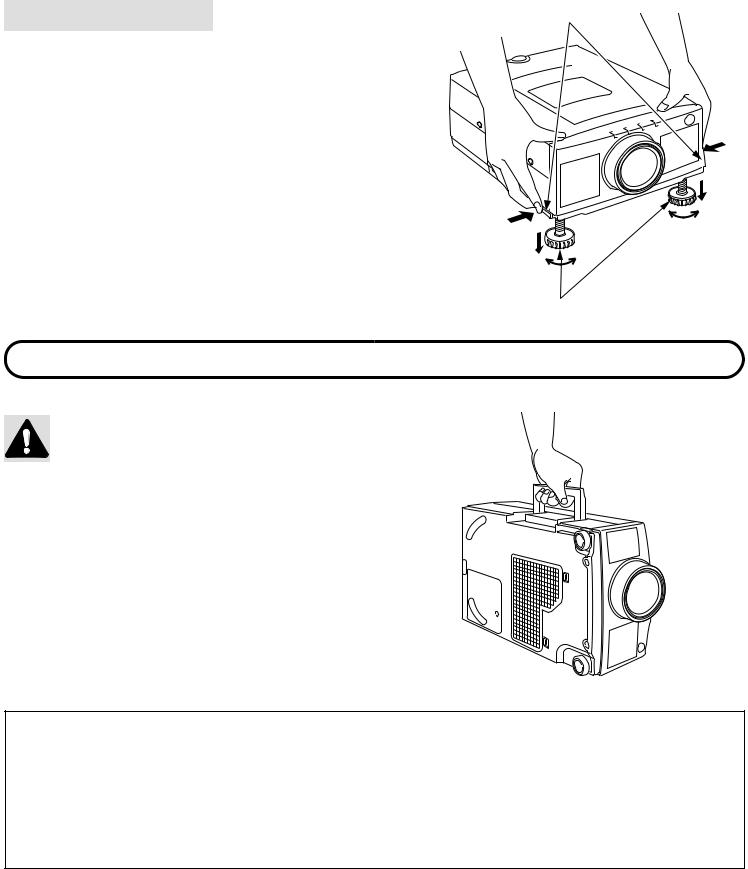
ADJUSTABLE FEET
Picture tilt and projection angle can be adjusted by ADJUSTABLE FEET. Projection angle can be adjusted 0 to 6°.
1.Lift the front of the projector and press the feet lock buttons (left and right) under the sides of the projector.
When the buttons are pressed, feet lock is released.
2.Release the buttons at desired front height position. (feet is locked).
3.Turn the adjustable feet and adjust picture position and tilt.
FEET LOCK BUTTONS
DOWN
UP


 DOWN
DOWN
UP
ADJUSTABLE FEET
MOVING THE PROJECTOR
Use the carrying handle when moving the projector.
Replace the lens cover and retract the adjustable feet when moving the projector to prevent damage to the projector.
CAUTION IN CARRYING OR TRANSPORTING THE PROJECTOR
¡Do not drop or give a shock to the projector, otherwise damage or malfunction may result. ¡When carrying the projector, use a Sanyo recommended Carrying Case.
¡Do not transport the projector by using a courier or transport service in an unsuitable transport case. This may cause damage to the projector. To transport the projector through a courier or transport service, use a Sanyo recommended Case.
¡For a carrying or transportation cases, contact a Sanyo authorized dealer.
– 9 –
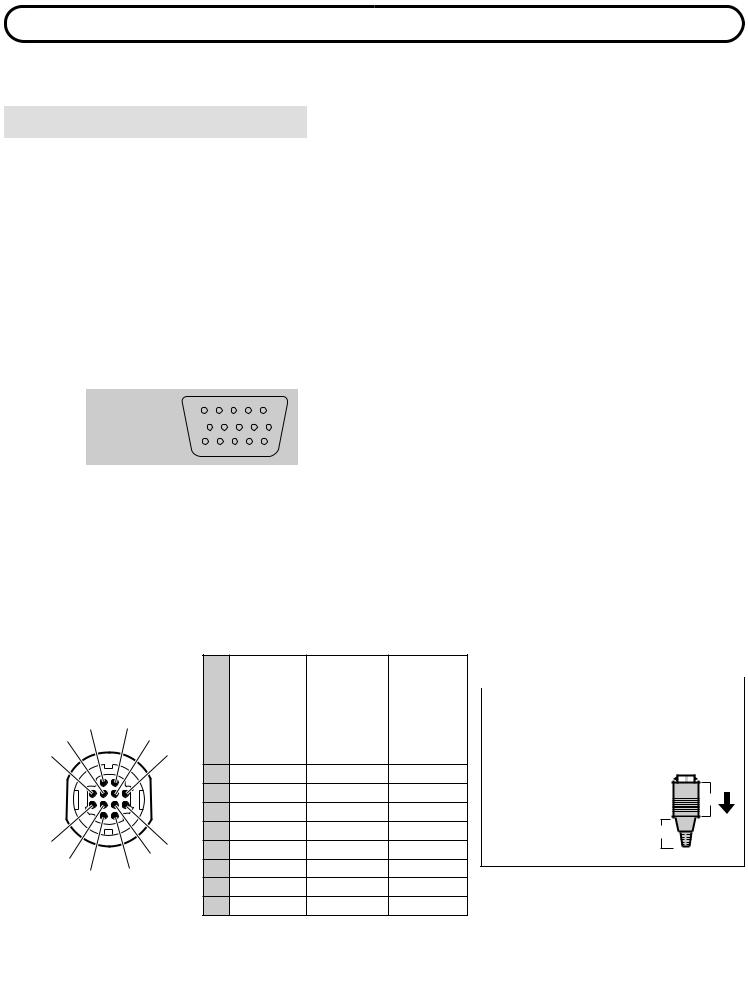
CONNECTING THE PROJECTOR
Your projector is equipped with various audio/video inputs and outputs including Computer HDB15-pin (VGA) terminals, Monitor HDB15-pin (VGA) terminals and S-VHS video.
CONNECTING THE COMPUTER
CONNECTING TO THE COMPUTER INPUT HDB15-PIN (VGA) TERMINALS (1 and 2)
Personal computers can be connected to the HDB15-pin (VGA) terminal on the projector.
¡Connect the computer to these terminals using the VGA cable and VGA/MAC adapter (not provided).
WARNING: For projectors, the VGA cable provided is designed to reduce RFI (Radio Frequency Interference) emissions. For regulatory compliance reasons, this cable must be used and must not be replaced by any other cable.
CONNECTING TO THE MONITOR OUTPUT HDB15-PIN (VGA) TERMINAL
This terminal contains the information that is viewed on the screen.
An external monitor can be connected to the HDB15-pin (VGA) terminal on the projector. ¡Connect the monitor to this terminal using a monitor cable (not provided).
|
5 |
4 |
3 |
2 |
1 |
HDB15-PIN |
10 |
9 |
8 |
7 |
6 |
TERMINAL |
|
|
|
|
|
|
15 14 13 12 11 |
||||
Pin No./Signal |
Pin No./Signal |
||
1 |
Red input |
9 |
Non Connect |
2 |
Green input |
10 |
Ground (Vert. sync.) |
3 |
Blue input |
11 |
Sense 0 |
4 |
Sense 2 |
12 |
Sense 1 |
5 |
Ground (Horiz. sync.) |
13 |
Horiz. sync. |
6 |
Ground (Red) |
14 |
Vert. sync. |
7 |
Ground (Green) |
15 |
Reserved |
8 |
Ground (Blue) |
|
|
CONNECTING TO THE COMPUTER AUDIO INPUT JACKS (1 and 2)
¡Connect audio outputs from your computer to these jacks using the audio cable (not provided).
CONNECTING TO THE MULTI-POLE 12-PIN (CONTROL PORT) CONNECTORS (1 and 2)
¡If you wish to control the computer with projector’s remote control unit, you must connect the control port on your computer to the projector’s control port with the control cable for PS/2 port (provided).
|
|
|
|
PS/2-port |
Serial Port |
ADB Port |
|
|
■ CONTROL PORT |
|
|
|
|
|
|
|
|
|
1 |
–––––––– |
TxD |
–––––––– |
CONTROL PORT CABLE |
|||
|
|
|
||||||
5 2 1 |
|
|
|
|
|
|
REMOVAL HINT |
|
4 |
|
2 |
CLK |
–––––––– |
ADB |
|||
|
Disconnect control port cable |
|||||||
|
3 |
DATA |
–––––––– |
–––––––– |
||||
6 |
|
3 |
|
|
|
|
with following steps. |
|
|
4 |
–––––––– |
–––––––– |
–––––––– |
||||
|
|
|
|
|
||||
|
|
|
5 |
–––––––– |
*RxD |
–––––––– |
1. Hold the portion (A) of the |
|
|
|
|
|
6 |
–––––––– |
–––––––– |
–––––––– |
connector with one hand. |
|
B |
|
|
|
7 |
–––––––– |
READY |
–––––––– |
2. Pull the portion (B) arrow |
|
|
|
|
|
|
|
|||||
|
|
|
direction and remove |
|
|
||||
|
|
|
8 |
–––––––– |
–––––––– |
–––––––– |
A |
|
|
10 |
|
|
connector. |
|
|||||
|
7 |
9 |
GND |
GND |
GND |
|
|
||
11 8 |
|
|
|
||||||
9 12 |
10 |
–––––––– |
–––––––– |
–––––––– |
|
|
|
||
|
|
|
11 |
–––––––– |
–––––––– |
–––––––– |
|
|
|
|
|
|
12 |
–––––––– |
–––––––– |
–––––––– |
|
|
|
* NOTE: The RxD port (5 pin on the Serial Port) is provided on control port 2 connector only. If you control the projector by computer, you must connect control port 2 connector.
– 10 –
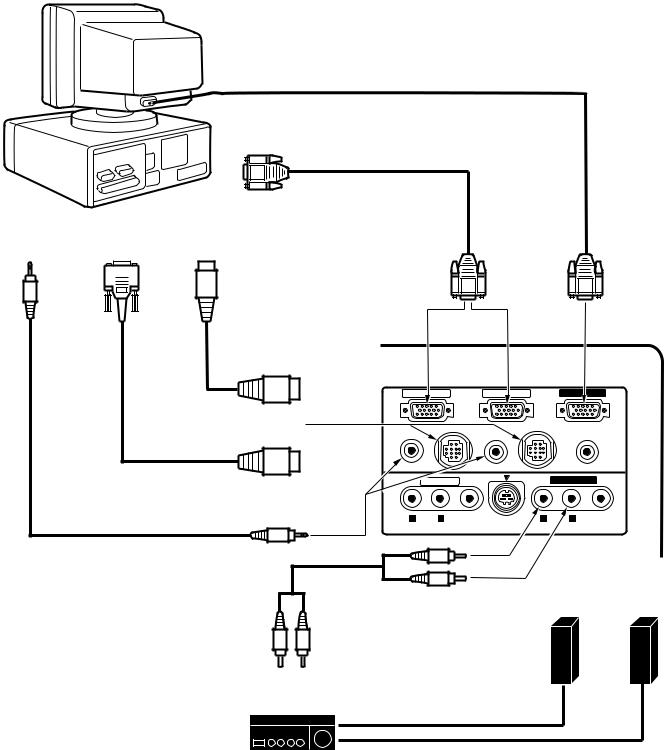
Connecting an IBM-compatible desktop computer
COMPUTER
|
|
|
|
MONITOR CABLE |
|
||
|
|
|
COMPUTER |
(NOT PROVIDED) |
|
||
|
|
|
|
|
|
|
|
|
|
|
OUTPUT |
|
|
|
|
|
|
|
|
VGA CABLE |
|
|
|
|
|
|
|
(PROVIDED) |
|
|
|
AUDIO |
SERIAL PORT |
PS/2 |
|
|
|
|
|
OUTPUT |
INPUT |
PORT INPUT |
|
|
|
|
|
|
|
|
|
COMPUTER |
|
|
MONITOR |
|
|
|
|
INPUT 1 or 2 |
|
|
OUTPUT |
|
|
|
MOUSE CABLE |
|
|
|
|
|
|
|
FOR PS/2 PORT |
|
|
|
|
|
|
|
(PROVIDED) |
|
|
|
|
|
|
|
|
COMPUTER IN 1 |
COMPUTER IN 2 |
MONITOR OUT |
|
|
|
|
CONTROL PORT |
|
|
|
EXT. SP (8Ω) |
|
|
|
OUTPUT 1 or 2 |
AUDIO 1 CONTROL PORT 1 |
AUDIO 2 CONTROL PORT 2 |
||
|
|
|
|
(STEREO) |
(STEREO) |
|
(STEREO) |
|
MOUSE CABLE |
|
COMPUTER |
AV IN |
|
MONITOR OUT |
|
|
FOR SERIAL PORT |
|
|||||
|
|
|
|
|
|||
|
(NOT PROVIDED) |
|
AUDIO INPUT |
|
|
|
|
|
|
|
1 or 2 |
R AUDIO L (MONO) VIDEO |
S-VIDEO |
R AUDIO |
L VIDEO |
AUDIO CABLE |
|
|
|
|
|
|
|
(NOT PROVIDED) |
|
|
|
|
|
|
|
|
|
|
|
AUDIO MONITOR |
|
Speaker (L) Speaker (R) |
|
|
|
|
|
OUTPUT |
|
|
|
R L
AUDIO SPEAKER
INPUT OUT
L
Amp. R
NOTE: The hook up should be done as per the above illustration. After hook up, turn on the projector, monitor, computer, in that order.
– 11 –
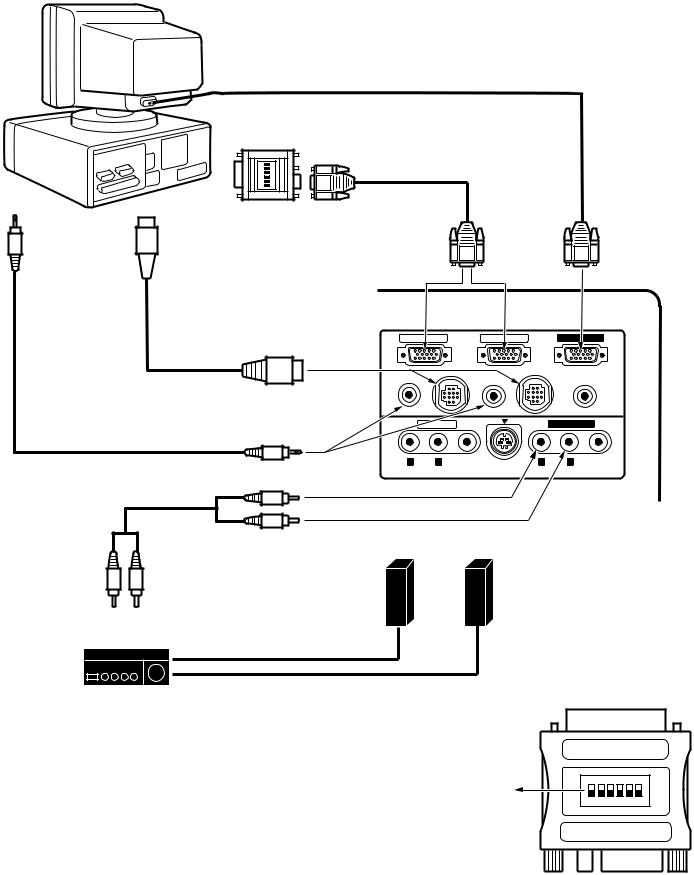
Connecting a Macintosh desktop computer
COMPUTER
COMPUTER
OUTPUT
ON |
1 2 3 4 5 6 |
VGA/MAC ADAPTER (NOT PROVIDED)
AUDIO |
|
|
|
ADB |
|
|
|
||
|
|
|
||
|
|
|
||
OUTPUT |
|
|
PORT INPUT |
|
|
||||
|
|
|
|
MOUSE CABLE FOR |
|
|
|
|
ADB PORT |
|
|
|
|
(NOT PROVIDED) |
MONITOR CABLE (NOT PROVIDED)
VGA CABLE (PROVIDED)
COMPUTER |
MONITOR |
|
INPUT 1 or 2 |
||
OUTPUT |
||
|
COMPUTER IN 1 |
COMPUTER IN 2 |
MONITOR OUT |
CONTROL PORT AUDIO CABLE OUTPUT 1 or 2 (NOT PROVIDED)
COMPUTER AUDIO INPUT 1 or 2
AUDIO 1 CONTROL PORT 1 |
AUDIO 2 CONTROL PORT 2 |
EXT. SP (8Ω) |
||
(STEREO) |
(STEREO) |
|
(STEREO) |
|
AV IN |
|
MONITOR OUT |
|
|
R AUDIO L (MONO) VIDEO |
S-VIDEO |
R AUDIO |
L |
VIDEO |
|
AUDIO MONITOR |
Speaker (L) Speaker (R) |
|
OUTPUT |
|
R |
L |
|
AUDIO |
SPEAKER OUT |
|
INPUT |
|
|
|
L |
|
Amp. |
R |
VGA/MAC ADAPTER |
|
Set the dip switches as shown in the table below depending on the |
|
|
|
|
|||||
RESOLUTION MODE that you want to use before you turn on the |
|
|
|
|
|||||
projector and computer. |
|
|
|
|
|
|
|
ON |
|
|
|
|
|
|
|
|
|
|
|
RESOLUTION MODE |
SW1 |
SW2 |
SW3 |
SW4 |
SW5 |
SW6 |
|
|
|
13” MODE (640 x 480) |
ON |
ON |
OFF |
OFF |
OFF |
OFF |
|
|
|
16” MODE (832 x 624) |
OFF |
ON |
OFF |
ON |
OFF |
OFF |
OFF |
||
19” MODE (1024 x 768) |
OFF |
ON |
ON |
OFF |
OFF |
OFF |
|
|
|
|
|
|
|
|
|
|
|
|
|
ON DIP
1 2 3 4 5 6
NOTE: The hook up should be done as per the above illustration. After hook up, turn on the projector, monitor, computer, in that order.
– 12 –
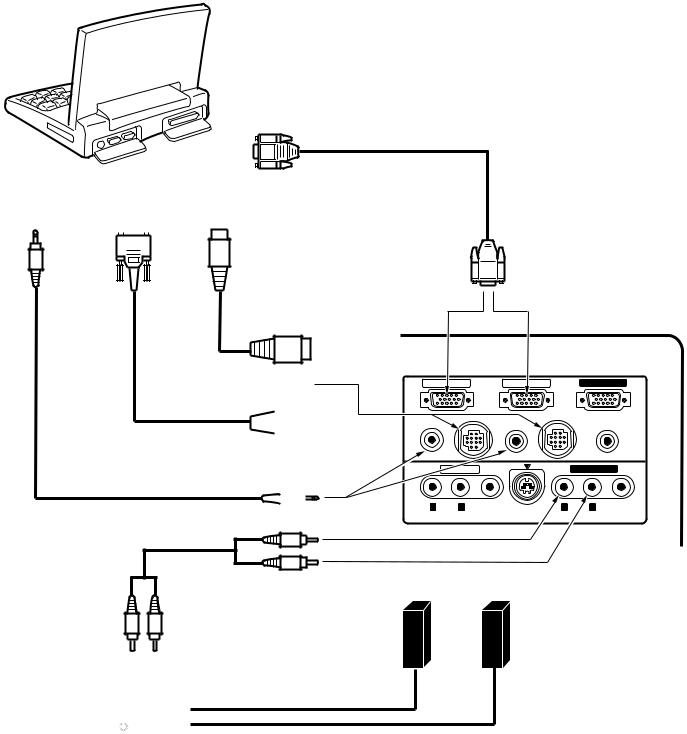
Connecting an IBM-compatible laptop computer
COMPUTER
COMPUTER
OUTPUT VGA CABLE (PROVIDED)
AUDIO |
SERIAL PORT |
PS/2 |
||||||||
OUTPUT |
INPUT |
PORT INPUT |
||||||||
|
|
|
|
|
|
|
|
|
|
|
|
|
|
|
|
|
|
|
|
|
|
COMPUTER 

 INPUT 1 or 2
INPUT 1 or 2 

MOUSE CABLE
FOR PS/2 PORT (PROVIDED)
|
CONTROL PORT |
||||||||||
|
OUTPUT 1 or 2 |
||||||||||
MOUSE CABLE |
|
|
|
|
|
|
|
|
|
|
|
|
|
|
|
|
|
|
|
|
|
||
|
|
|
|
|
|
|
|
|
|
||
COMPUTER |
|||||||||||
FOR SERIAL PORT |
|||||||||||
(NOT PROVIDED) |
AUDIO INPUT |
||||||||||
|
1 or 2 |
||||||||||
AUDIO CABLE |
|
|
|
|
|
|
|
|
|
|
|
|
|
|
|
|
|
|
|
|
|
||
|
|
|
|
|
|
|
|
|
|
||
(NOT PROVIDED) |
|
|
|
|
|
|
|
|
|
|
|
COMPUTER IN 1 |
COMPUTER IN 2 |
MONITOR OUT |
||
AUDIO 1 CONTROL PORT 1 |
AUDIO 2 CONTROL PORT 2 |
EXT. SP (8Ω) |
||
(STEREO) |
(STEREO) |
|
(STEREO) |
|
AV IN |
|
MONITOR OUT |
|
|
R AUDIO L (MONO) VIDEO |
S-VIDEO |
R AUDIO |
L |
VIDEO |
AUDIO MONITOR |
Speaker (L) Speaker (R) |
OUTPUT |
|
R |
L |
|
AUDIO |
|
|
INPUT |
|
SPEAKER OUT |
|
|
L |
|
|
|
|
|
R |
Amp. |
|
|
|
|
|
NOTE: The hook up should be done as per the above illustration. After hook up, turn on the projector, computer, in that order.
– 13 –
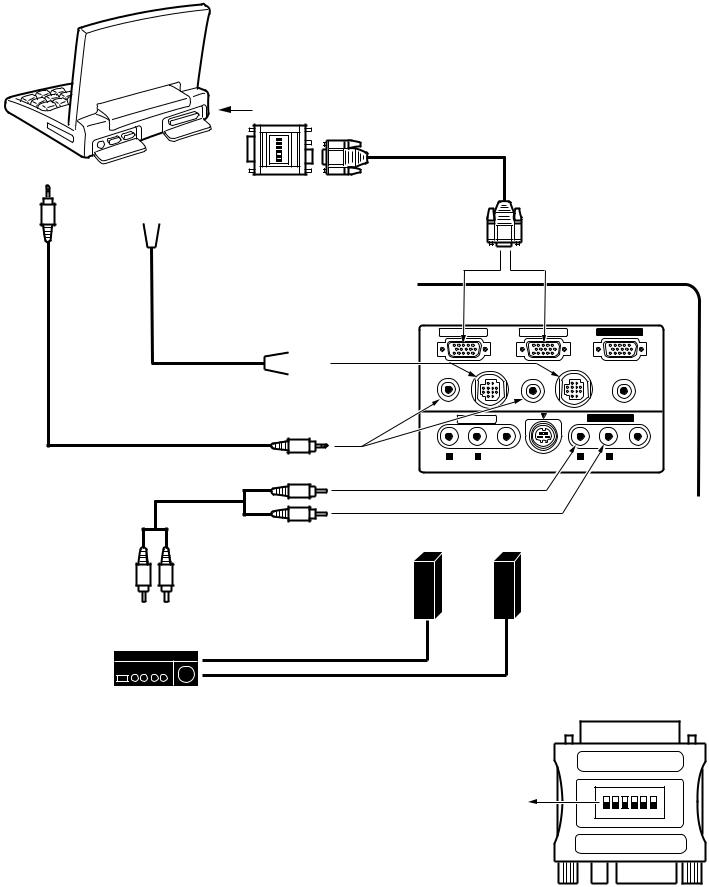
Connecting a Macintosh PowerBook computer
COMPUTER
The Macintosh PowerBook requires the use of the
PowerBook Video Adapter shipped with the PowerBook.
TO POWERBOOK
VIDEO ADAPTER
ON |
1 2 3 4 5 6 |
VGA CABLE (PROVIDED)
|
|
|
|
VGA/MAC ADAPTER |
|||||||
|
|
|
|
||||||||
AUDIO |
|
|
|
(NOT PROVIDED) |
|||||||
|
|
|
ADB PORT |
||||||||
|
|
|
|||||||||
|
|
|
|||||||||
|
|
|
|||||||||
|
|
|
|||||||||
|
|
|
|||||||||
OUTPUT |
|
|
|
INPUT |
|||||||
|
|
|
|
MOUSE CABLE |
|||||||
|
|
|
|
FOR ADB PORT |
|||||||
|
|
|
|
(NOT PROVIDED) |
|||||||
|
|
|
|
|
|
|
|
|
|
|
|
|
|
|
|
|
|
|
|
|
|
|
|
|
|
|
|
|
|
|
|
|
|
|
|
|
|
|
|
|
|
|
|
|
|
|
|
|
CONTROL PORT |
|
|
OUTPUT 1 or 2 |
|
AUDIO CABLE |
COMPUTER |
|
(NOT PROVIDED) |
AUDIO INPUT 1 or 2 |
|
|
AUDIO MONITOR |
|
|
OUTPUT |
|
R |
L |
|
AUDIO |
SPEAKER OUT |
|
INPUT |
||
L |
||
|
||
Amp. |
R |
|
|
COMPUTER
INPUT 1 or 2
COMPUTER IN 1 |
COMPUTER IN 2 |
MONITOR OUT |
||
AUDIO 1 CONTROL PORT 1 |
AUDIO 2 CONTROL PORT 2 |
EXT. SP (8Ω) |
||
(STEREO) |
(STEREO) |
|
(STEREO) |
|
AV IN |
|
MONITOR OUT |
|
|
R AUDIO L (MONO) VIDEO |
S-VIDEO |
R AUDIO |
L |
VIDEO |
Speaker (L) Speaker (R)
VGA/MAC ADAPTER
Set the dip switches as shown in the table below depending on the |
|
|
|
|
|||||
RESOLUTION MODE that you want to use before you turn on the |
|
|
|
|
|||||
projector and computer. |
|
|
|
|
|
|
|
ON |
|
|
|
|
|
|
|
|
|
||
RESOLUTION MODE |
SW1 |
SW2 |
SW3 |
SW4 |
SW5 |
SW6 |
|
|
|
|
|
|
|||||||
13” MODE (640 x 480) |
ON |
ON |
OFF |
OFF |
OFF |
OFF |
|
|
|
|
|
|
|||||||
16” MODE (832 x 624) |
OFF |
ON |
OFF |
ON |
OFF |
OFF |
|
|
|
OFF |
|||||||||
19” MODE (1024 x 768) |
OFF |
ON |
ON |
OFF |
OFF |
OFF |
|
|
|
|
|
|
|
|
|
|
|
|
|
ON DIP
1 2 3 4 5 6
NOTE: The hook up should be done as per the above illustration. After hook up, turn on the projector, computer, in that order.
– 14 –

CONNECTING THE VIDEO EQUIPMENT
CONNECTING TO THE AV INPUT JACKS
Connect to the video and audio outputs of a VCR, video disc player, DVD player, video camera, satellite TV tuner or other AV equipment.
¡Connect audio/video outputs from external sources to the input jacks using the audio/video cable.
¡If the audio signal from the AV equipment is stereo, be sure to connect the right and left channels to the respective right and left audio input jacks.
¡If the external audio signal is monaural, connect it to the left jack.
S-VHS FORMAT VCR CONNECTION
The AV input includes an extra video input jack marked S-VIDEO to allow connection to an S-VHS format VCR that has separate Y/C video signals. The S-VIDEO jack has priority over the VIDEO jack.
CONNECTING TO THE VIDEO MONITOR OUTPUT JACK
This jack will contain the video information of the selected program source video only. If you select program source Computer 1 or Computer 2, there is no signal.
Connect video input from AV equipment to this jack by RCA cable.
Whenever the S-VIDEO signal source is viewed on the screen, the video signal available at the MONITOR OUTPUT jack will be in black and white (monochrome).
CONNECTING TO THE AUDIO MONITOR OUTPUT JACKS
These jacks will contain the audio information of the selected program source being viewed on the screen (Computer 1, Computer 2 or Video 1). If you have selected program source Computer 1 the audio signal connected to the Computer 1 audio input jack will be available at the audio monitor output jacks.
¡If the audio input of the audio equipment is stereo, be sure to connect the right and left channels to the respective right and left jacks.
¡If the audio input of the audio equipment is monaural, connect it to the left jack.
– 15 –
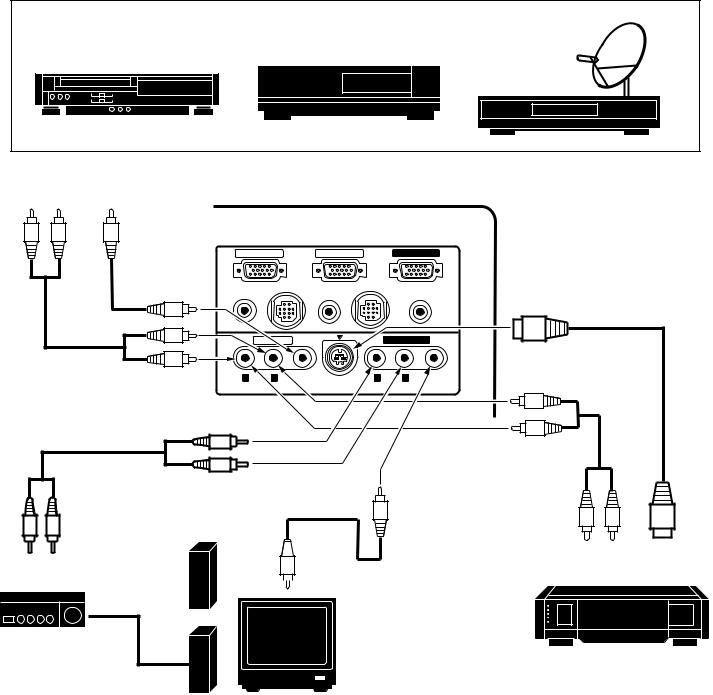
Connecting the Video Equipment
|
VIDEO EQUIPMENT |
|
|
DVD Player |
|
Video Cassette Recorder |
Video Disc Player |
|
Satellite |
||
|
||
|
TV Tuner |
L R
AUDIO VIDEO
OUTPUT OUTPUT
VIDEO INPUT
COMPUTER IN 1 |
COMPUTER IN 2 |
MONITOR OUT |
AUDIO 1 CONTROL PORT 1 |
AUDIO 2 CONTROL PORT 2 |
EXT. SP (8Ω) |
(STEREO) |
(STEREO) |
(STEREO) |
S-VIDEO INPUT
|
AV IN |
|
|
MONITOR OUT |
|
R |
L |
VIDEO |
S-VIDEO |
R AUDIO L |
VIDEO |
|
AUDIO INPUT |
|
|
|
|
AUDIO |
|
|
AUDIO MONITOR |
INPUT |
|
|
|
||
|
OUTPUT |
VIDEO |
|
R |
L |
||
MONITOR |
|||
|
Speaker (L) |
||
|
OUTPUT |
AUDIO |
SPEAKER |
|
|
AUDIO |
S-VIDEO |
||
|
|
||||||
|
|
||||||
OUT |
|
VIDEO |
OUTPUT |
OUTPUT |
|||
INPUT |
L |
|
|
|
INPUT |
|
|
|
|
|
|
|
|||
|
|
|
|
|
|||
|
|
|
|
|
|
|
|
Amp. R
S-VHS-VCR
Etc...
Speaker (R) MONITOR
NOTE: The hook up should be done as per the above illustration. After hook up, turn on the projector, video equipment, in that order.
– 16 –
